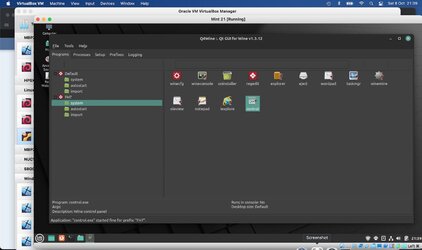Just got back from a months-long illness and recovery.
@jimbo45 is the most knowledgeable beyond question, but right at the moment, I can't use either Linux installation I have Ubuntu on my laptop and Manjaro on my desktop because (!) neither will accept my password - I have VMs I moved to Windows on my desktop which accepts my password (I have a uniform method of passwords - not the best but works for me. I am posting here to let folks know about the new versions of VMware and Vbox. Vbox 7 is available and made a VM of Manjaro easily. VMware experiment (what will become next year VMware 17 is free for over 100 days - I have to think twice about upgrading to 17 and, of course, cannot run either on Linux. Boxes on Linux are suitable for quick installs but not as powerful as QEMU/KVM. Is also a good virtualization choice for people just starting. I have not had a chance yet to update my specs, but I am running the last dev version. I happen to be comfortable with the latest version of Gnome, which just puts the Windows version of multiple desktops to shame. Sorry for the long and winding post but this is my first in many, many months. Happiness and good health to all.
Glad you're back.
BTW Debian bookwarm (will be rel 12) is also a good release -- choose the "stable testing" branch - if you use debian 11.5 - current) add the bookworm backports repo otherwise the emulated TPM (swtpm / libswtpm / swtpm-tools) package has gone AWOL and you need it to run Windows VM's with KVM/QEMU.
To avoid bloat - at install time unclick all the install options inc desktop GUI, GNOME, KDE or whatever, just choose the bottom 3 options (web server (that's Apache) system utilities and ssh server. You can then add GUI desktop manually without always drawing in the zillions of often unused apps that would be installed by default. Linux Mint is also a good lean distro.
I dislike a load of distros now installing SNAP and a whole load of those things by default. UBUNTU is particularly bad at that.
Also UUPDUMP ISO creation these days needs to be run from WITHIN WINDOWS unfortunately (you can do it from within a Windows VM too) as ISO's aren't created properly leading to weird and unpredictable effects when you boot up the Guest VM -- there are warnings posted now on the UUPDUMP site about that. Otherwise you might find many apps includung WD of all things give you the message : App xxxxx needs a new link to run -- or similar.
Don't forget if using WINDOWS GUESTS on KVM/QEMU get the win-virtio iso from the fedora site (free) as this has things equivalent to vmware-tools or vbox-additions which improve significantly the video, mouse, keyboard and diskio capability as well as the virtual NIC.
I prefer also where possible to pass thru real hardware rather than rely on a load of "Para-virtualisation" but that depends on your available hardware set. Graphis passthru is particularly good if you have dual port graphics etc. In this case IOMMU needs to be enabled BOTH ON THE HOST (in its BIOS / setup) AND ON THE GUEST - usually as a kernel or grub start up parameter (IOMMU=Y or ON depending on your distro)
If you are running "Unsupported hardware" as far as W11 is concerned-- if it's CPU -- then in the VM set the config to use "HYPERVISOR default "- and unnclick copy host topography. If it's video - spice driver will work (add the video driver in windows from the winvirtio-disk after Guest ist boot to change from Ms basic video driver), for TPM the emulated TPM works, and for sec boot choose that in the initial VM setup -- even on an MBR BIOS only machine you can create a virtual disk with an EFI partition and install Windows.
Have fun --
Cheers
jimbo






